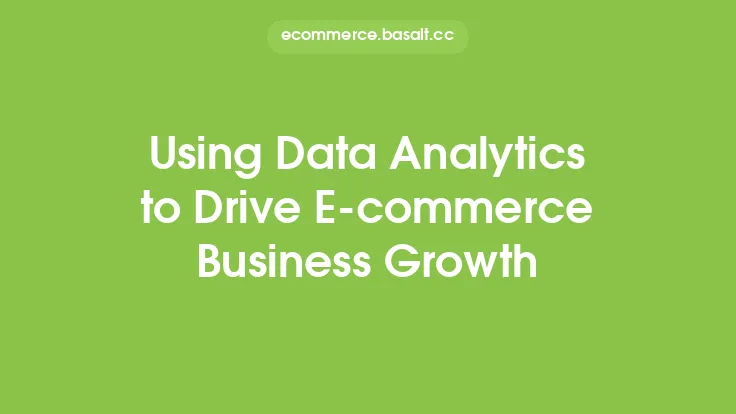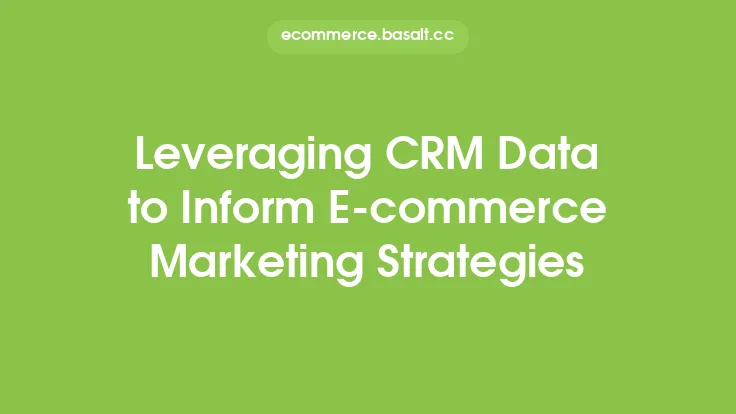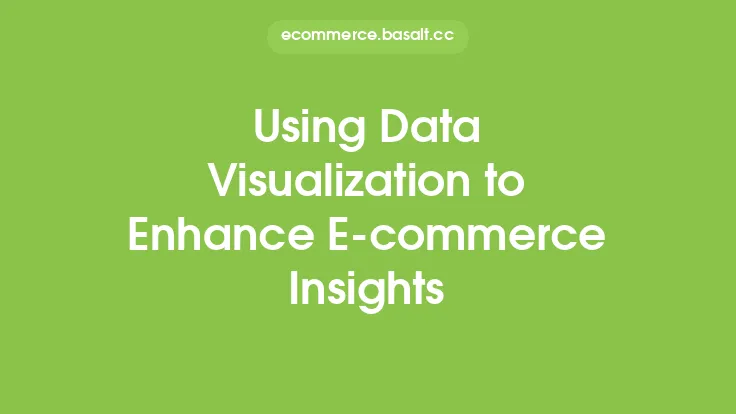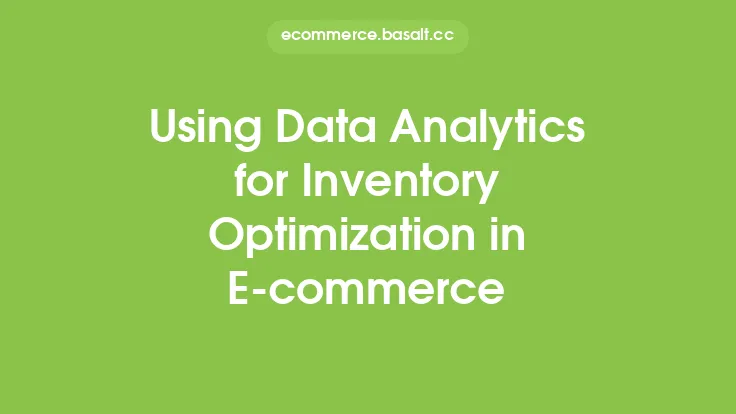In the world of e-commerce, data is the lifeblood that drives business decisions. With the vast amount of information available, it can be overwhelming to determine what data to collect, how to analyze it, and how to use it to inform business decisions. However, by leveraging data effectively, e-commerce businesses can gain a competitive edge, optimize operations, and drive growth. In this article, we will explore the importance of using data to inform e-commerce business decisions and provide insights on how to do it effectively.
Introduction to Data-Driven Decision Making
Data-driven decision making is the process of using data and analytics to inform business decisions. This approach allows e-commerce businesses to move away from relying on intuition or anecdotal evidence and instead, make decisions based on facts and evidence. By using data to inform decisions, businesses can reduce the risk of errors, improve efficiency, and increase the likelihood of success. In e-commerce, data-driven decision making can be applied to various aspects of the business, including product development, marketing, customer service, and supply chain management.
Types of Data Used in E-commerce
There are several types of data that e-commerce businesses can use to inform decisions. These include:
- Customer data: This includes information about customer demographics, behavior, and preferences. Customer data can be used to personalize marketing campaigns, improve customer service, and develop targeted products.
- Sales data: This includes information about sales trends, revenue, and profitability. Sales data can be used to identify top-selling products, optimize pricing, and improve inventory management.
- Website data: This includes information about website traffic, engagement, and conversion rates. Website data can be used to optimize website design, improve user experience, and increase conversions.
- Social media data: This includes information about social media engagement, sentiment, and trends. Social media data can be used to develop social media marketing campaigns, improve customer service, and monitor brand reputation.
- Market data: This includes information about market trends, competitors, and customer needs. Market data can be used to identify opportunities, develop competitive strategies, and improve market positioning.
Data Analysis Techniques for E-commerce
To extract insights from data, e-commerce businesses need to use various data analysis techniques. These include:
- Descriptive analytics: This involves using data to describe what has happened in the past. Descriptive analytics can be used to identify trends, patterns, and correlations in data.
- Predictive analytics: This involves using data to predict what may happen in the future. Predictive analytics can be used to forecast sales, identify potential risks, and develop proactive strategies.
- Prescriptive analytics: This involves using data to recommend actions. Prescriptive analytics can be used to optimize pricing, improve inventory management, and develop targeted marketing campaigns.
- Machine learning: This involves using algorithms to analyze data and make predictions or recommendations. Machine learning can be used to develop personalized product recommendations, improve customer service, and detect fraud.
Tools and Technologies for Data Analysis
To analyze data effectively, e-commerce businesses need to use various tools and technologies. These include:
- Data management platforms: These platforms allow businesses to collect, store, and manage data from various sources.
- Analytics software: This software allows businesses to analyze data and extract insights. Examples of analytics software include Google Analytics, Adobe Analytics, and Tableau.
- Data visualization tools: These tools allow businesses to visualize data and communicate insights effectively. Examples of data visualization tools include Power BI, D3.js, and Chart.js.
- Machine learning platforms: These platforms allow businesses to develop and deploy machine learning models. Examples of machine learning platforms include TensorFlow, PyTorch, and Scikit-learn.
Best Practices for Using Data to Inform E-commerce Business Decisions
To use data effectively, e-commerce businesses need to follow best practices. These include:
- Define clear goals and objectives: Before collecting and analyzing data, businesses need to define what they want to achieve.
- Collect relevant data: Businesses need to collect data that is relevant to their goals and objectives.
- Use multiple data sources: Businesses should use multiple data sources to get a comprehensive view of their operations.
- Analyze data regularly: Businesses should analyze data regularly to identify trends, patterns, and correlations.
- Take action based on insights: Businesses should take action based on insights extracted from data.
- Continuously monitor and evaluate: Businesses should continuously monitor and evaluate the effectiveness of their data-driven decisions.
Common Challenges and Limitations
While using data to inform e-commerce business decisions has many benefits, there are also common challenges and limitations. These include:
- Data quality issues: Poor data quality can lead to inaccurate insights and decisions.
- Data overload: Too much data can be overwhelming and make it difficult to extract insights.
- Lack of skills and expertise: Businesses may not have the necessary skills and expertise to collect, analyze, and interpret data.
- Limited resources: Small businesses may not have the resources to invest in data analysis and interpretation.
- Data privacy and security concerns: Businesses need to ensure that they are collecting, storing, and using data in a way that is compliant with data privacy and security regulations.
Future of Data-Driven Decision Making in E-commerce
The future of data-driven decision making in e-commerce is exciting and rapidly evolving. With the increasing use of artificial intelligence, machine learning, and the Internet of Things (IoT), businesses will have access to more data and insights than ever before. Additionally, the use of cloud computing, big data analytics, and data visualization will make it easier for businesses to collect, analyze, and interpret data. As a result, businesses will be able to make more informed decisions, improve efficiency, and drive growth. However, businesses will also need to address the challenges and limitations associated with using data, including data quality issues, data overload, and data privacy and security concerns.





